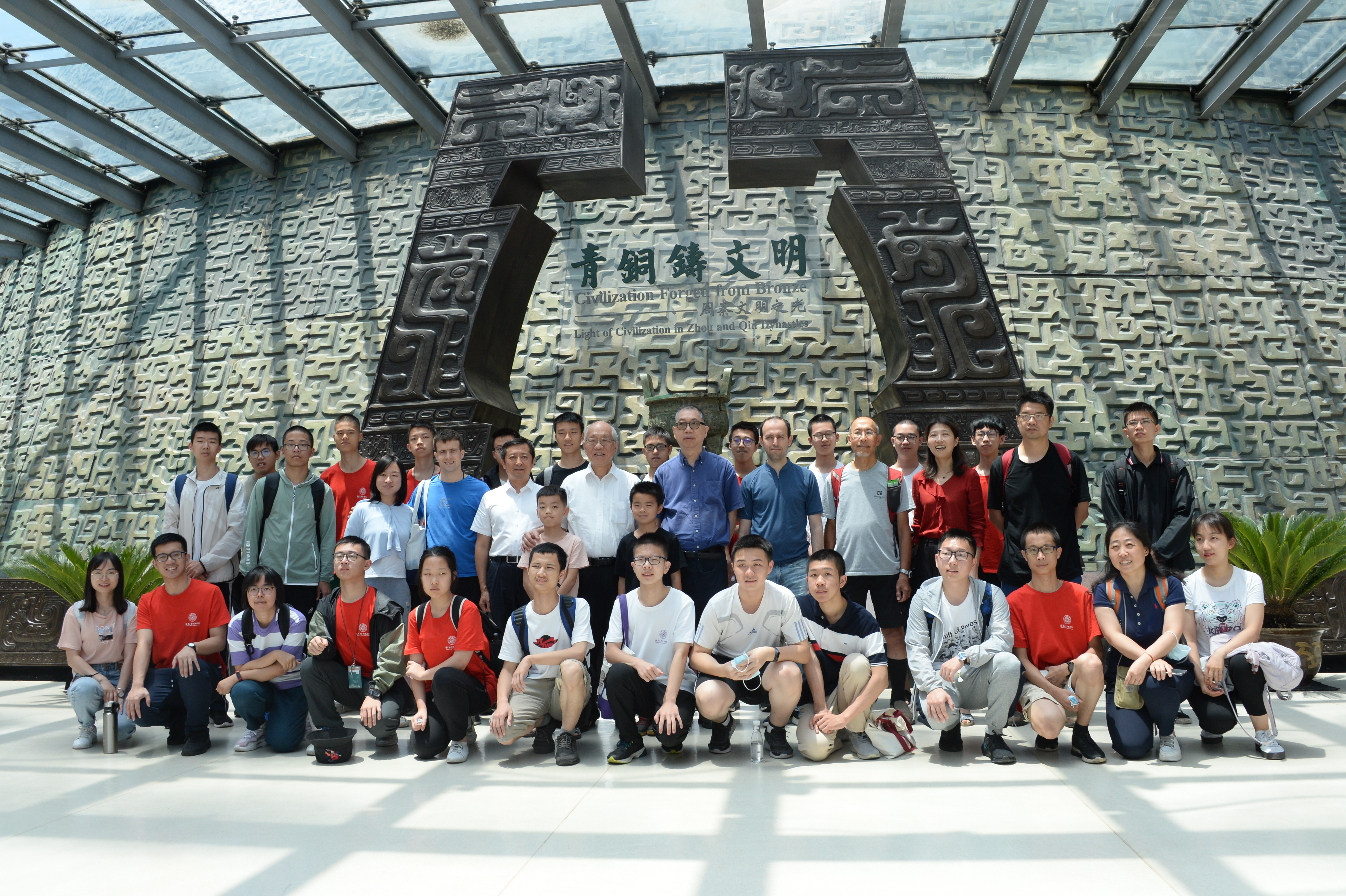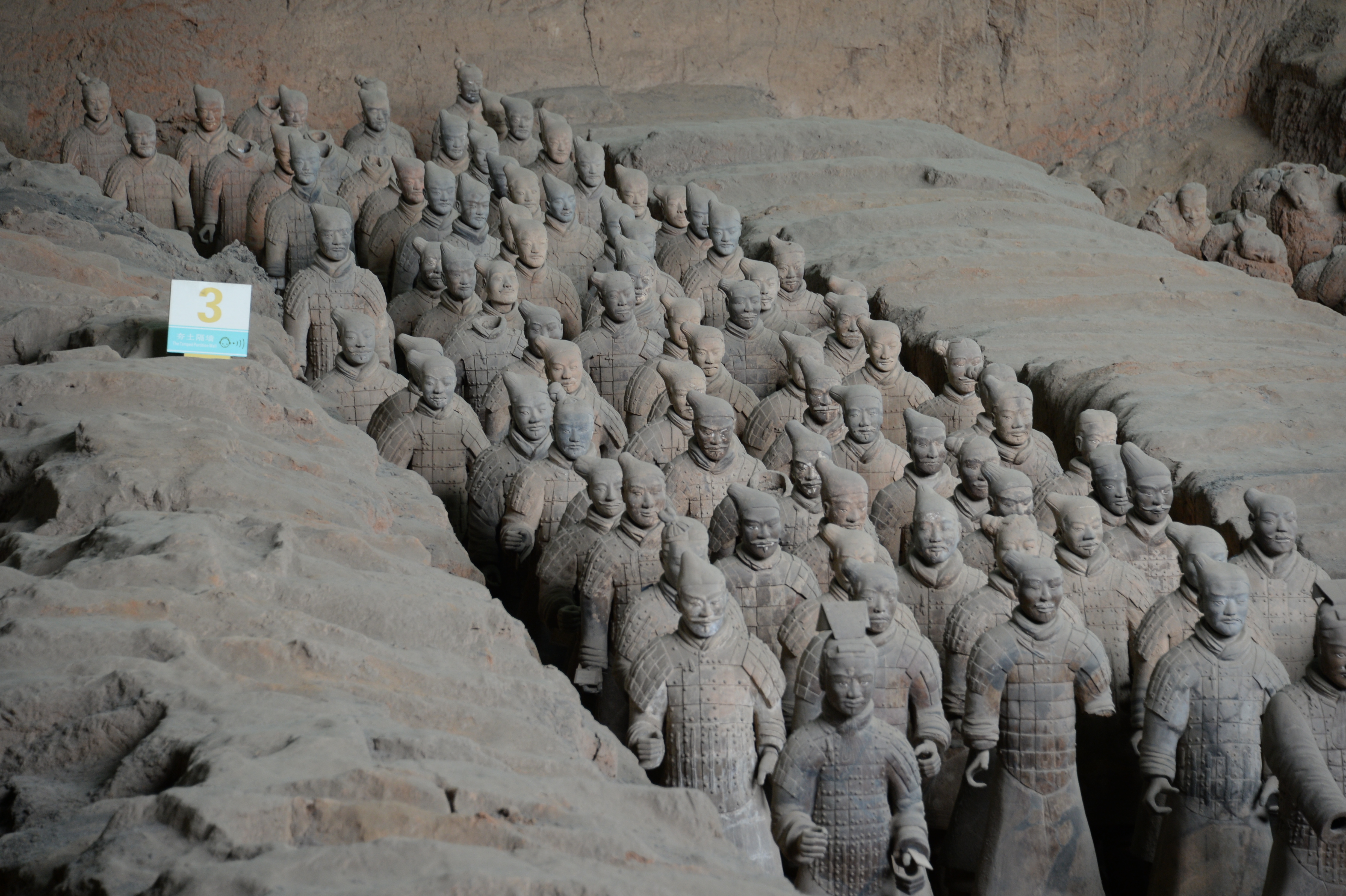We visited Anyang City and learned about Shang Dynasty (or Yin Dynasty). The route of this tour corresponded to the course of Chinese history and culture from Dynasties of Western Zhou and Qin to Western Han and Tang. Despite differences among periods, the wisdom of ancient people constantly manifested itself from the relics discovered. We were all amazed by how extensive our culture was and how proud we should be as Chinese.
Western Zhou Dynasty and Qin Dynasty
The Western Zhou, a period dating back to thousand years ago, was renowned for antiques with creativity. In Baoji Bronzeware Museum, numerous delicate exhibits demonstrated the aesthetics of symmetry pursued by ancient Chinese people, and among all bronze wares He Zun stood out as one of the best. The inscription of He Zun narrates the ritual celebrating King Cheng of Zhou moved his residence to Chengzhou, mutually verifying historical documentation such as Shangshu (Documents of Antiquity) and Shiji (The Grand Scribe’s Records). More significantly, it is the oldest artifact with the written characters meaning “Middle Country (China).” Its inscription states “Reside in Middle Country and reign over the nation here.” This decision made by King Wu of Zhou that built capital at Luoyi City presented his vision for establishing a peaceful and prosperous country.

Qiuzhen teachers and students in Baoji Bronzeware Museum
Yongcheng City Ruins and Qin Gong No.1 Tomb. Ancient Chinese chose to “serve the dead as they would have served them alive,” since they believed that life carried on after death in another world instead of complete oblivion. The tomb of Duke Jing of Qin adopted a form named “Huangchangticou”, which was one of the highest burial standards, revealing the leading position of Qin among other states in the periods of war. All coffins of Qin cemeteries discovered were placed in latitudinal direction, specifically head to the west and feet to the east. This shows Qin’s determination to conquering the east land.

Qin Gong No.3 Tomb
We paid a visit to the Terracotta Warriors and Horses. The army discovered in the burial site seemed vigorously alive, manifesting how powerful the country and its force was at that time. As the first emperor of feudal age, Qin Shi Huang left profound influences for later generations by standardizing written language, transportation, currencies measures and weight after establishing the first centralized unified multi-ethnic country. He aborted human sacrifices and chose terracotta ones as a replacement, which symbolized the turn in Chinese history from barbarity to civilization.
Han Dynasty
Han Dynasty was an age of power and greatness. During the trip, we immersed ourselves into that era two thousand years before and took a grain of that magnificence.
We looked back through time as though we were unfolding a scroll depicting the rise and fall of great powers during thousands of years. Trees and rocks silently narrated the kingship of Emperor Wu of Han in whose reign he fought the intruders and revised domestic laws; scratches of stone carving told about the meritorious victories Huo Qubing won against Xiongnu army; gilt bronze relics reflected the wisdom of ancient people and the prosperity of that time. Han Dynasty gave Chinese the character Han as our people’s name, honoring us with unprecedented status in the course of history.
The past forty years under reform and openness policy echoed with the time of the reign of Emperor Wenjing of Han as a thriving country appeared in both periods. Now China has pioneered onto a brand new path, marching to the goal of becoming a prosperous state. We young people should learn from the history and lead a life with the aspiration to creating a bright future for the country and our people.
Tang Dynasty
Chang’an City was degraded from the capital since the deposition of Emperor Xian of Han, resulting in serious underground water pollution with a salty taste of well water. Yang Jian, Emperor Wen of Sui, decided to rebuild the capital taking into account of various factors. Thus Daxing City, a city more than twice the area of Chang’an of Han Dynasty, was built for the first time in the history of China with a rectangular shape and a neat road layout.
Xuanwu Gate Incident in July 626 AD marked the start of a new age. Just as the period of Emperor Wen and Emperor Jing, dramatic enhancements were seen in economics, culture, and military force. Its political and diplomatic power also reached the top after one hundred years.
We were fascinated by anecdotes of the kingdom, innumerable fabulous poems, eighteen grand mausoleums, sacred stone carvings along the pavement, murals and pottery figurines discovered in the tombs. The confidence and openness brought by the prosperous state with its vast land revealed the power and culture shaped by open-minded policies and sustained pursuit, displaying a potential model for our future development.